
|
|
|
|
|
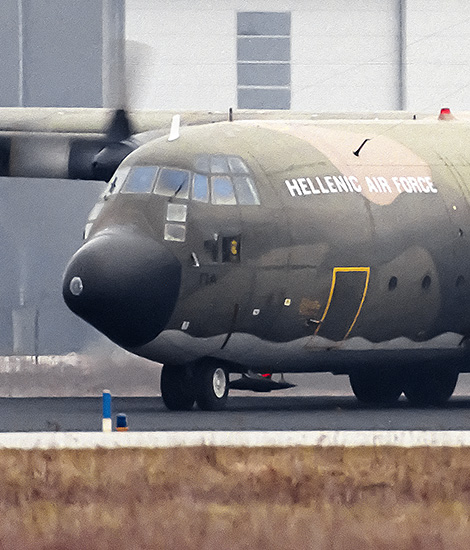
|
Air Refuelling Training; Eindhoven, March 5, 2001
The Greeks are Refuelling at the KDC-10; Text and Photograph's by Alex van Noye
The KDC-10 is the largest transport and tanker aircraft of the Royal Netherlands Air Force and can quickly transport large amounts of cargo and personnel over long distances. The KDC-10 is also widely used for refueling F-16s in flight. The operational combat range of the F-16 is significantly increased in this way.
In the first week of March, four Greek F-16s practiced during the air to air refueling training with the Dutch KDC-10. The Greeks themselves have no tankers and are therefore dependent on another party for their training. This time the Dutch KDC-10 was used for the Greek tanker qualifications. By using tanker aircraft, fighter aircraft can be deployed far from their home base and they can stay for a longer period in the area of operations. The effective strength of the F-16 fleet of the Air Force and its partners is therefore considerably increased. For the occasion, the four Greek F-16s moved to Eindhoven Air Base on March 5, 2001. The aircraft would fly a week together with the Dutch. Eventually the aircraft flew back to Greece on Friday, March 9, 2001. The Greek F-16s were all four of the type F-16D. The aircraft are assigned to the 341 Mira which is stationed at the Greek airbase Almiros Nea Anchialos. The F-16s of this unit are recognizable on their red tail band. For transporting ground support to Eindhoven, the Greeks used two C-130 Hercules aircraft. The Greeks are like the Dutch Air Force a large user of the General Dynamics F-16 Fighting Falcon. Achieving the tanker qualifications is for all fighter pilots an annual qualification. Refueling in the air is not an easy job and requires a maximum concentration of the pilot. There is maximum control needed to keep the aircraft in position exactly behind the tanker while refueling.
The Royal Netherlands Air Force purchased two DC-10 passenger aircraft of the airline Martinair in the Netherlands in June 1992. Both DC-10s were converted into multifunctional transport and tanker aircraft. Halfway 1995, the aircraft entered service at the Royal Netherlands Air Force. The KDC-10 aircraft are both stationed at Eindhoven Air Base. The aircraft are both assigned to the no 334 Squadron. Also the two KDC-10s both received a name, the T-235 is named after John Scheffer and the T-264 is named after Prince Bernhard. The design of the KDC-10 is based on that of the
|
|
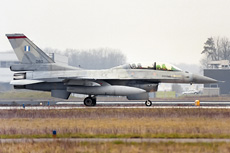
|
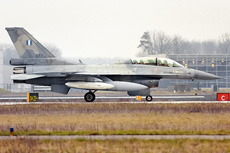
|
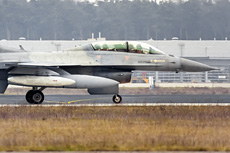
|
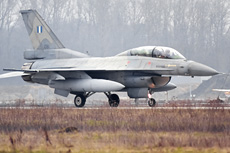
|
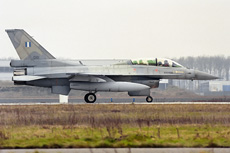
|
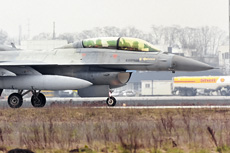
|
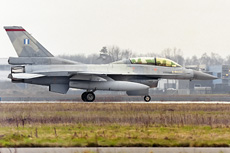
|
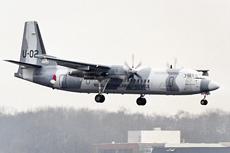
|
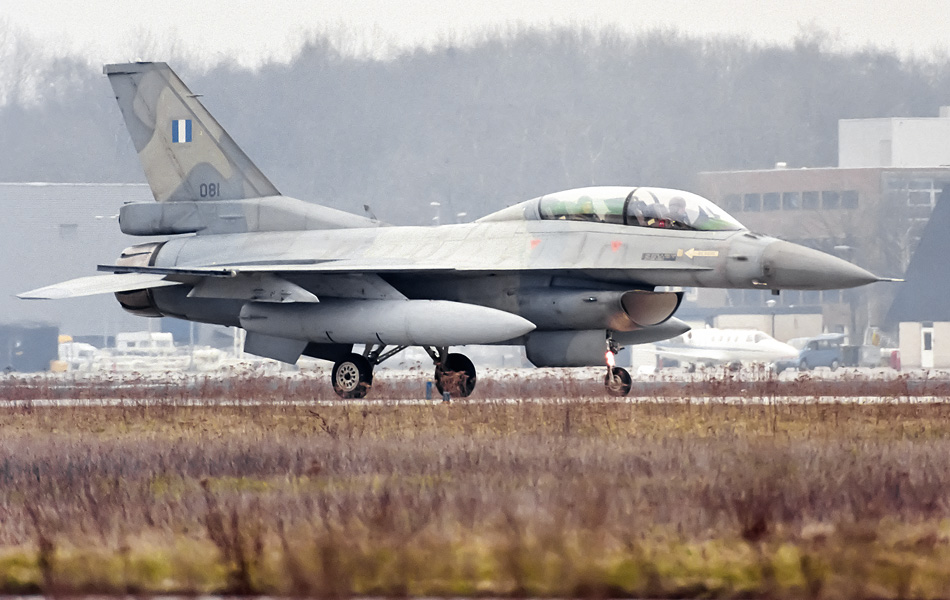
|
KC-10 Extender which is in use in the United States. The Extender is a further development of the civil McDonnell Douglas DC-10. The KC-10 Extender is built for general transportation tasks and refueling of other aircraft in flight. The KC-10 Extender was originally developed by McDonnell Douglas for the United States Air Force to complement the aging Boeing KC-135 Stratotanker fleet. A total of 60 KC-10s were produced for the US Air Force. The adaptation of the DC-10s included the installation of a flying boom system and appropriate positioning lighting. Also systems like fuel, electrical and hydraulic systems were adjusted for the use of this boom and a Remote Air Refuelling Operating (RARO) control station was built in the aircraft. In addition to these updates also military avionics and navigation and communication equipment was installed in the aircraft. The aircraft were delivered in a gray and white color scheme. The bottom of the aircraft is gray and the top of the fuselage and wings were white. In addition a thin blue band was painted over the fuselage of the KDC-10.
The Dutch KDC-10s were mainly purchased to refuel other aircraft in the air. Refueling of other aircraft is carried out with the own fuel supply of the aircraft. The letter K in the name KDC-10 is an internationally indication which is used to indicate that an aircraft is a tanker. Refuelling in the air occurs at the Dutch KDC-10 using the RARO system. This system is comprised of five different cameras and a flying boom for the refuel action. The boom is a narrow pipe of 8 meters long which can be lowered down at the back of the KDC-10. The boom can be extended to a maximum length of 15 meters. The boom is operated by a boom operator from a space behind the cockpit of the KDC-10. The boom operator has a good view on the aircraft which need to be refueled using a computer and some three-dimensional monitors. The flying boom is maneu- vered into position by using a joystick. The boom operator can vary the length of the boom during the refuel action. The movements of the boom are made with the help of small wings which are mounted on the boom. By operating the wings the boom can fly to the desired position. Controlling the boom happens with a high precision. When refueling an aircraft more than 1750 liters of fuel per minute can be pumped from the KDC-10 to the fuel tanks of the receiving aircraft. By using the KDC-10 to refuel the Dutch F-16s, the mission duration is extended drastically. This allows the fighter to stay longer in the area of operations to support ground forces for example.
The KDC-10 is next to the task of refueling aircraft also able to quickly carry large amounts of cargo and personnel over long distances. The type of cargo can vary from passengers to cargo or a combination configuration of half passengers and half cargo. When the aircraft is transporting cargo it is able to lift a load of maximum 65 tons of cargo inside the KDC-10. In the combination configuration, in addition to the freight also another 165 passengers can be transported in the KDC-10. The tanker is generally configured by default in the combination configuration. In this configuration the passengers are sitting in the rear part of the fuselage of the KDC-10. The cargo is loaded into the aircraft via a large cargo door on the right side of the plane just behind the cockpit. The KDC-10s are regularly used for humanitarian flights. Since the time that the aircraft are in use in the Dutch Air Force, they have made several flights to countries in Central Africa, South America and the Middle East. They have also been used in the recent years for refueling aircraft of the Air Force and its NATO partners around the Balkans and for humanitarian flights in Europe. One particular example of the flexibility of the KDC-10 was a flight during the Kosovo crisis. A KDC-10 first carried out a refuel mission over Southeastern Europe in which NATO aircraft were provided with fuel and later the aircraft went to Skopje Airport in Macedonia. There, refugees from Kosovo were taken aboard and flown to the Netherlands.
|
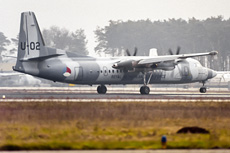
|
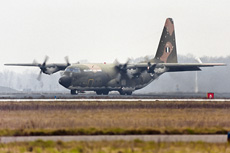
|
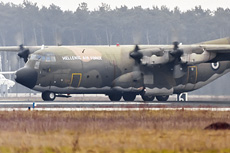
|
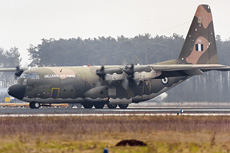
|
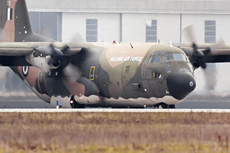
|
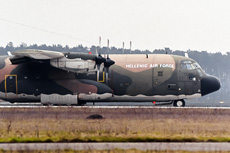
|
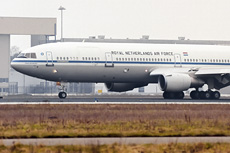
|
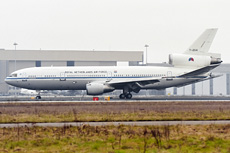
|
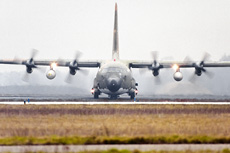
|
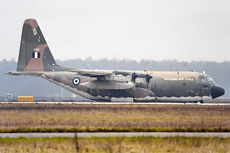
|
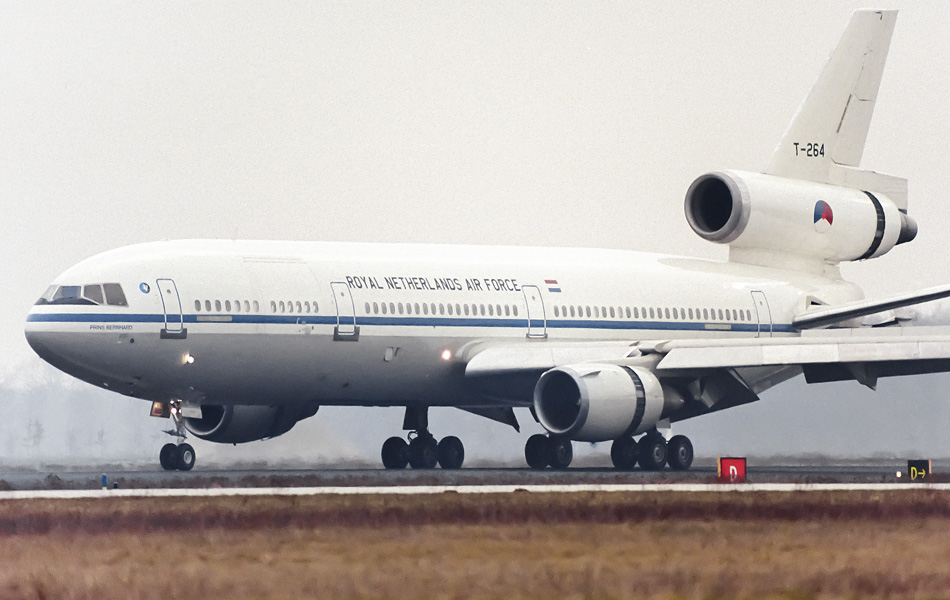
|
|
|

|







